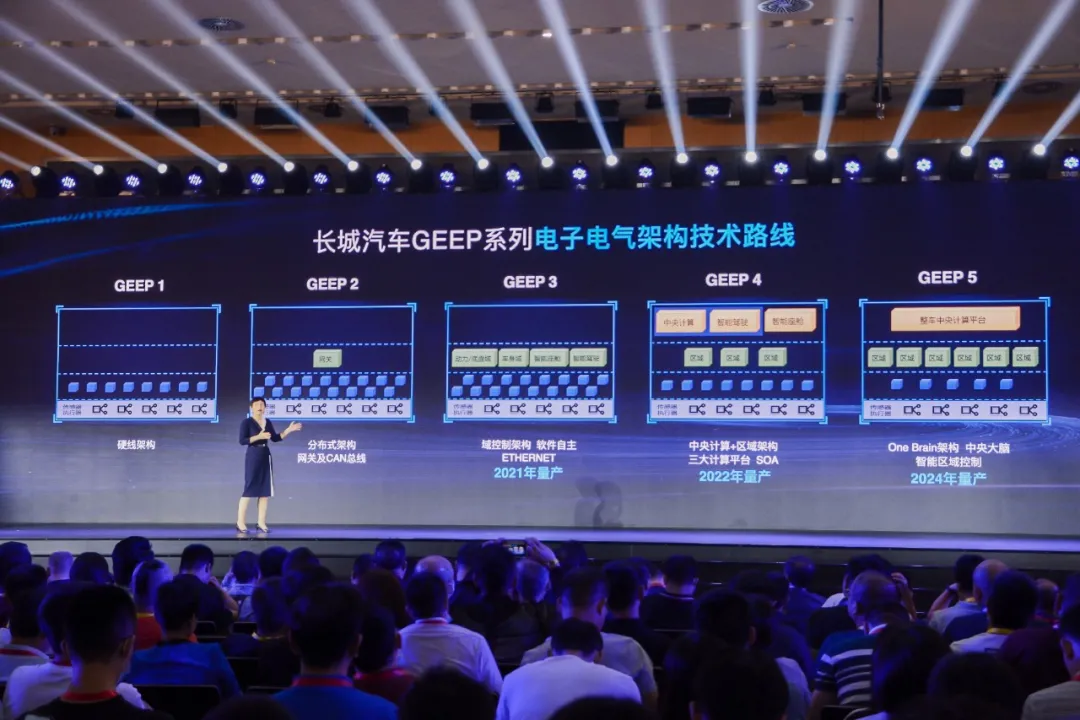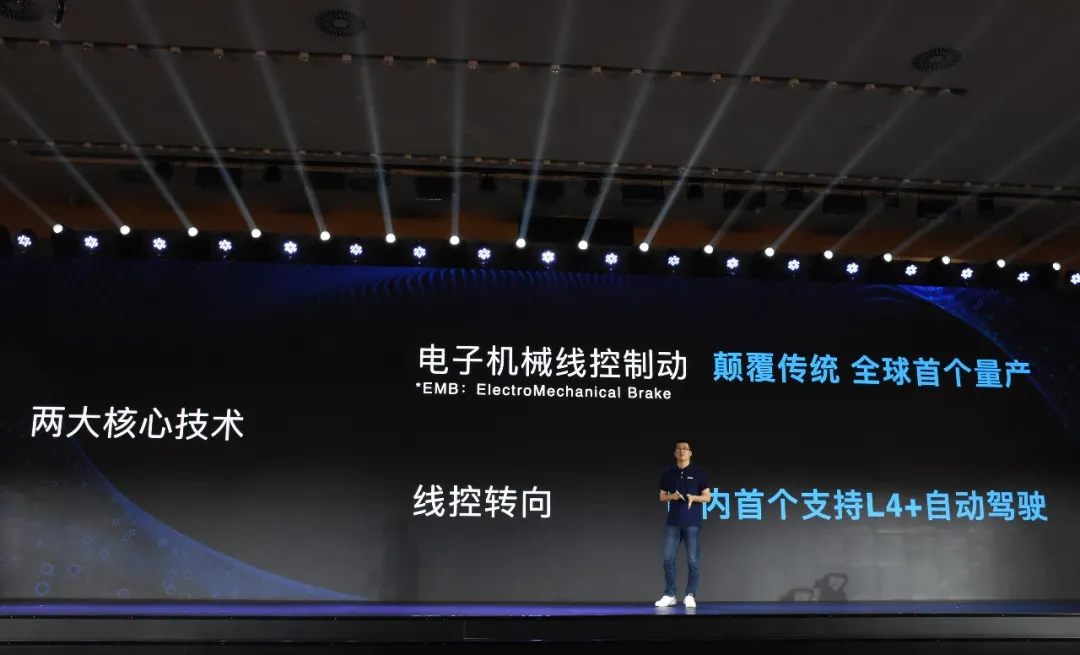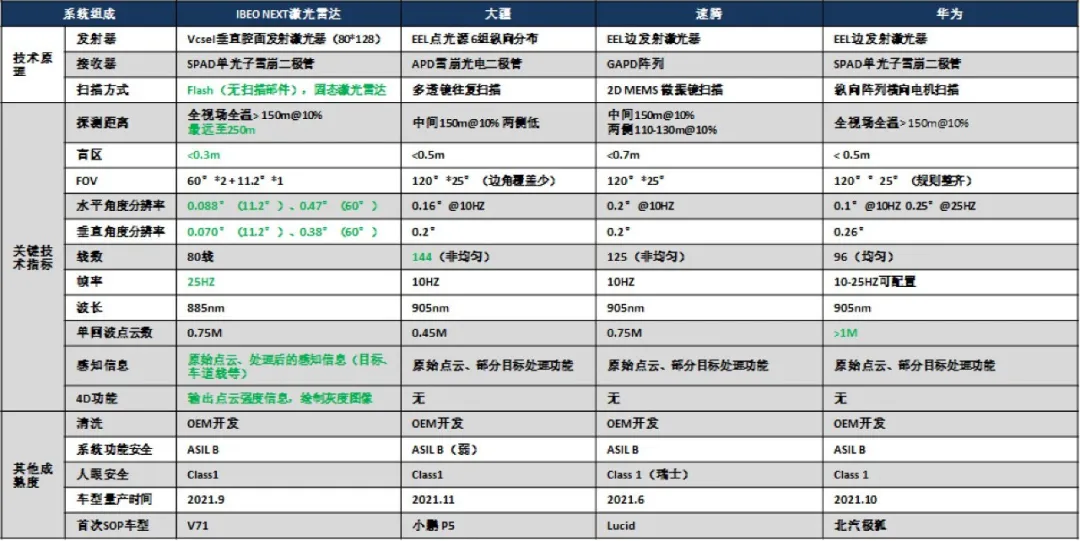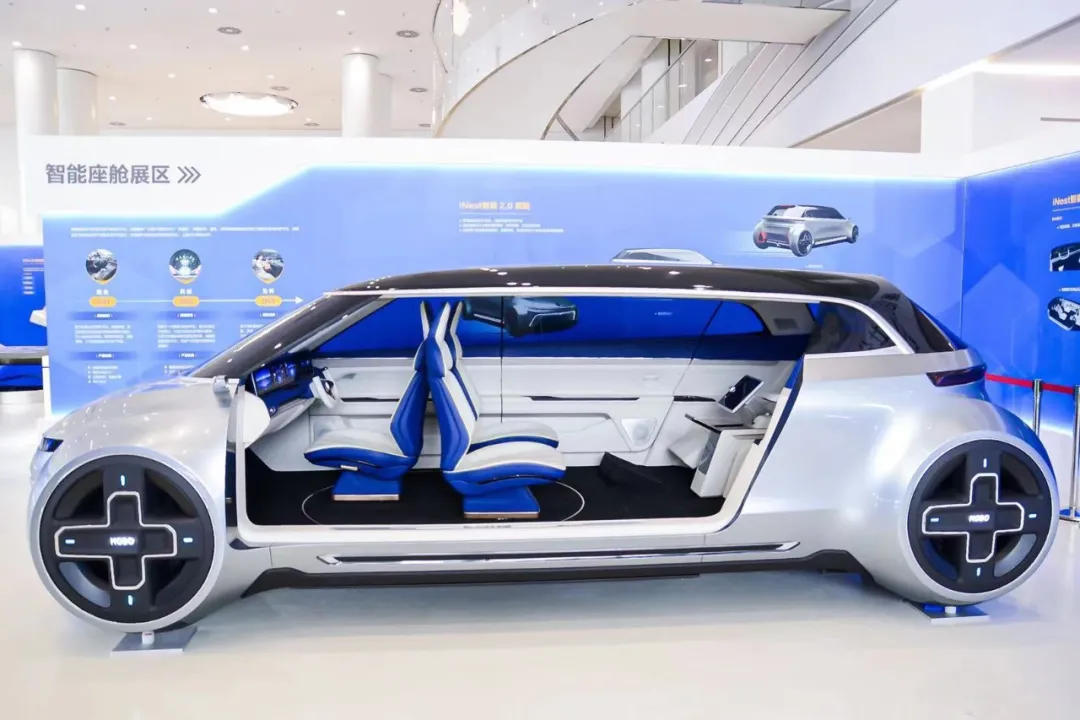In July 2020, Great Wall Coffee Intelligent Technology brand was officially launched, proposing the value proposition of “injecting life into technology”.
One year later, on June 29, 2021, Great Wall brought the Coffee Intelligence 2.0. According to Mu Feng, Vice President of Great Wall Motors, the comprehensive upgrade from Coffee Intelligence 1.0 to 2.0 makes the car a future travel partner that can think and judge, and can sustainably grow, restructuring the relationship between people and cars. This marks the formal entry of Great Wall Motors from perception intelligence to cognitive intelligence.
Coffee Intelligence 2.0 includes one intelligent central system + one powerful cornerstone + three major intelligent upgrades. Among them, one intelligent central system is a brand new electronic and electrical architecture; one powerful cornerstone is a smart line control chassis; and the three major intelligent upgrades are centered around the intelligent cockpit, intelligent driving, and intelligent services, restructuring the relationship between people and cars and building the Great Wall Motors Smart Network.
Core information:
-
The fourth-generation electronic and electrical architecture of Great Wall Motors has entered the product development stage and will be launched in China in 2022. The landing of the fifth-generation electronic and electrical architecture will be completed in the next three years.
-
The Great Wall Motors’ line control chassis was globally released for the first time and will be officially put into commercial use in 2023.
-
Coffee Intelligence 2.0’s intelligent cockpit proposes the “1+2+N” travel space design architecture and released the first cockpit OS – GC-OS.
-
Great Wall Motors’ automatic driving computing platform ICU3.0 was officially released. The single board computing power can reach 360T and will soon be installed in Coffee Intelligence automatic driving products to be released in 2022.
The fourth-generation E/E architecture will be launched in the third quarter of 2022.
“道生一,一生二,二生三,三生万物,万物归一,” said Shan Hongyan, Vice President of Great Wall Motors. This reflects the process from the universe’s nothingness to complexity to unity. The development of Great Wall Motors electronic and electrical architecture and underlying planning logic also follows this principle.
The traditional electronic and electrical architecture was basically “unchanged for ten years, or only one change in ten years”. In recent years, with the emergence of the software-defined car concept and the development of intelligent technology, the electronic and electrical architecture has undergone revolutionary changes, from the initial hard-line architecture to distributed ECU… and finally to cross-domain integrated central computing areas. The development of electronic and electrical architecture is also a reflection of the development of the automotive industry.
“In order to form a world of all things connected by clouds and edges, the car will be an important unit,” said Shan Hongyan. In her view, the realization of a world of all things connected is dependent on E/E architecture. Therefore, the E/E architecture is the “highway” and infrastructure for the digital era of an all things connected world.
 The electronic and electrical architecture of Great Wall Motors has gone through five generations of evolution. It started with the early hardwired architecture of version 1.0, transitioning into the distributed architecture of version 2.0, expanding into a complex network under version 3.0, forming a distributed architecture.
The electronic and electrical architecture of Great Wall Motors has gone through five generations of evolution. It started with the early hardwired architecture of version 1.0, transitioning into the distributed architecture of version 2.0, expanding into a complex network under version 3.0, forming a distributed architecture.
According to data, the third-generation electrical and electronic architecture was released in 2020 by Great Wall Motors. It covers four domain controllers: body control, powertrain, smart cockpit, and intelligent driving which are all mainly developed independently by Great Wall Motors and its subsidiaries. All controllers of the vehicle support OTA software updates and have already been mass-produced and applied to all models.
Single Hongyan, an official representative, said that starting from version 3.0, Great Wall Motors completely possesses all the development capabilities of application layer software. The software on the top of the four domain controllers, and even some of the bottom and integrated software are all independently developed by Great Wall Motors, forming a team of nearly 2,000 software developers and integrators.
So far, Great Wall Motors has established a global research and release station called “Seven Countries and Ten Regions” and has formed over 15,000 development teams. Among them, the number of teams dedicated to vehicle architecture and electrical and electronic controllers exceeds 2,500 people, and software developers exceed 3,000 people, which provides complete forward-looking autonomous flow development capabilities.
Great Wall Motors’ new electronic and electrical architecture is currently in the product development phase. “The fourth-generation electronic and electrical architecture based on centralized computing and regionalization will be launched in the third quarter of 2022,” said Single Hongyan. The vehicle equipped with this architecture will form a centralized calculation, intelligent cockpit, and high-end autonomous driving platform, among which the centralized computing platform integrates the functions of the body control, gateway, air conditioning, powertrain, chassis control, and ADAS.
Single Hongyan believes that the intelligent cockpit will be more flexible and versatile in the next 3-5 years, while the changes in intelligent driving will tend to be stable. In the next three years, with the development of hardware, the latest high-performance chips, and the maturity of communication technology, Great Wall Motors will further release the 5.0 architecture. The vehicle will only have one brain. She expects this architecture to be mass-produced in 2024.
The wire-controlled chassis will be put into commercial use in 2023, according to Song Dongxian, the vice president of technology at Great Wall Motors. “Traditional chassis relies on human operation and is like a puppet. Pull the line and lift the leg; turn the line and move the arm. However, the wire-control chassis relies on the central processor and will use sensor integration with road conditions to make coordination.” In the perception, decision-making, and execution of the three core stages of autonomous driving, the wire-controlled chassis belongs to the most critical execution segment and is the cornerstone of achieving autonomous driving.
Therefore, starting from June 2019, Great Wall Motors has been targeting Level 4 and above autonomous driving capabilities and has been equipped with wire-controlled chassis. Now, it has had its global debut.Based on Great Wall Motors’ brand new electronic and electrical architecture, the Great Wall Motors’ electronic line-controlled chassis integrates five core chassis systems, which are line-controlled steering, line-controlled braking, line-controlled shifting, line-controlled throttle, and line-controlled suspension. It covers six degrees of freedom in vehicle motion control, front and rear, left and right, up and down, and covers all chassis driving actions, achieving the coordination of one brain for five systems to realize six degrees of freedom control.
Reportedly, from core hardware such as electronic and mechanical line-controlled brakes, steering actuators, motors, simulators, controllers, to the entire software system, all are independently designed and developed by Great Wall Motor, owning all independent intellectual property rights. At present, around the core technology of the Great Wall line-controlled chassis, Great Wall has applied for more than 100 patents.

Song Dongxian stated that Great Wall’s line-controlled chassis has two core technologies.
The first is the electronic and mechanical line-controlled brake system.
Great Wall Motors’ electronic and mechanical line-controlled braking system adopts EMB brake instead of the hydraulic system used in EHB line-controlled braking systems, which directly clamps friction plates with a motor, replacing the four major components of ESP, ibooster, hydraulic pipelines, and EPB in the EHB line-controlled braking system, realizing the integration of the mechanical components. The use of four-wheel EMB brake technology can reduce weight by 10%, improve control accuracy, and respond faster.
The second is the electronic and mechanical line-controlled steering system.
The line-controlled steering system of Great Wall Motors is the first in the country to support L4+ autonomous driving. This technology completely eliminates the steering transmission shaft between the steering wheel and the steering column, which is replaced by a private CANFD to realize signal transmission within the system. It supports steering wheel folding, completely isolates road vibrations, has better NVH, and uses a feel simulator to simulate road feel while retaining driving fun.
Song Dongxian pointed out that the line-controlled chassis improves vehicle handling performance. This includes reducing braking response time from 430ms to 80ms, improving braking recovery rate, increasing range by more than 20%, improving overall performance through system coordination, and strong playability with dynamic transmission ratios adjustable from 9-16.
Line-controlled chassis software architecture, application-layer software, and basic software are all independently developed by Great Wall Motors and can be continuously upgraded to continuously improve vehicle performance and functionality. At the same time, to meet the demand for software upgrades, Great Wall’s intelligent line-controlled chassis reserves sufficient hardware capacity.
The Great Wall line-controlled chassis will be officially commercialized in 2023. By 2025, the penetration rate of high-end automatic driving of Great Wall Motors will reach 40%.
The first smart cockpit OS of Café Intelligence is released
“1+2+N” Café Intelligence 2.0 intelligent cockpit proposes a new definition for the design architecture of travel space.Design based on the “One Person-Machine Interaction Design System”; rely on the “Scalable Computing Hub + Self-developed Intelligent Software” as the two growth cornerstones; achieve the “Service for N Intelligent Application Scenarios”.
According to Chen Xianling, CDO of Great Wall Motors, “The intelligent cockpit adopts the Qualcomm 8155 chip to build an exclusive intelligent cockpit platform at the hardware level, achieving mass production leadership worldwide. Compared with the previous generation CPU, the new system’s computing power is increased by more than 2.5 times, and the GPU image processing capability is increased by more than 3.5 times.”
At the software level, Great Wall Motors has formed full-link software capabilities, such as cockpit OS, self-developed voice, self-developed map/navigation, and self-developed visual algorithm. Among them, system-level software can achieve FOTA major version upgrades every three months; functional software can be updated in real-time according to user demand.
At the press conference, Great Wall Motors released the first cockpit OS of Cafe Intelligence, GC-OS, which has one independently developed self-developed framework layer, two unified self-developed interfaces (App unified interface + HAL unified interface), adapted to different platforms and brands, compatible with all Great Wall Motors models, featuring fast delivery, scalability, pluggability, ecosystem exchange, and software and hardware compatibility.
In Chen Xianling’s view, the future intelligent cockpit will break the “data island” and develop from intra-domain fusion to cross-domain full-scenario fusion. The relationship between humans and cars will evolve from “user-initiated interaction” to “machine-initiated interaction” based on scene intelligence perception. “Experience design,” “Experience innovation,” “Cross-domain integration,” and “Full-scenario intelligence” become the reference design standards for future intelligent cockpits.
The ICU 3.0 single-board computing power has reached 360T. “The key to autonomous driving is always data,” said Zhang Kai, head of Great Wall Motors’ intelligent driving team. He believes that intelligent driving is a long-distance race, and only by improving the speed and reducing the cost of data iteration can we continuously win. Real data scale is the lifeblood of the autonomous driving industry.
He expects that in 2021, among all models of Great Wall Motors, 250,000 vehicles will have effective data collection capabilities, and by 2024, Great Wall Motors will have sold 5.3 million vehicles with effective data collection capabilities, forming the largest autonomous driving data warehouse in China.
To achieve the above goals, Great Wall Motors released the fully self-developed third-generation autonomous driving computing platform ICU 3.0.According to reports, ICU 3.0 is currently the most energy-efficient autonomous driving computing platform in mass production worldwide, with a single board computing power of up to 360T, which can be sustainably upgraded to 1440T through inter-board cascading. It supports 6 channels of gigabit Ethernet with a data transmission capacity of up to 6Gbps. It can access 12 channels of 8 million pixel cameras, 5 channels of millimeter-wave radar, and 3 channels of lidar, and adopts a multi-view + multi-millimeter-wave + multi-lidar front fusion perception algorithm.

In terms of perception system, the Coffee Intelligence Driving system is equipped with 3 lidars, 5 millimeter-wave radars, 12 vision sensors, 12 millimeter-wave radars, high-precision maps, navigation and positioning systems and other sensors. The lidar adopts a full solid-state lidar without any rotating parts. In Zhang Kai’s opinion, the full solid-state structure is simple, which helps to improve the service life, reduce cost, and has high scanning accuracy.
In terms of chips, the main chip of the ICU 3.0 domain controller is Qualcomm (8540+9000), which has a computing power of up to 360TOPS and an average power consumption of only 5.5TOPS/W. The safety redundancy chip is Infineon (TC397), which can do L1/L2 level downgrade control.
At present, ICU 3.0 platform has completed many development work such as controller design, board production, software Bringup, and underlying BSP driver.
Zhang Kai said: “The release of the third-generation intelligent driving computing platform will comprehensively guide our autonomous driving technology from the perception intelligence era to the cognitive intelligence era. The long-range automatic driving products with limited scenario L4 level ability that can be achieved by using the third-generation large-computing platform will be officially launched in 2022 and will be equipped in the Coffee Intelligence Driving products.”
After the press conference, when asked about “Why does Great Wall have to self-research full stack”, Dan Hongyan said that if you don’t understand a technology and just use it, it is difficult to produce innovation. “Usually any new technology has a process of entering and exiting.” In her opinion, Great Wall must have full-stack self-research and external partners. “We are taking the two paths in sync. Only when you understand it yourself, can you work with partners to maximize the advantages of both parties.”
Therefore, on the afternoon of the press conference, Great Wall Motors also announced the official establishment of the Coffee Intelligent Ecosystem Alliance and launched the Coffee Intelligent Crowdfunding Platform plan. The platform will be launched within this year (2021).
The number of partners in the Great Wall Motors Coffee Intelligent Ecosystem Alliance has exceeded 80, covering various fields such as intelligent cockpit, intelligent driving, AI interaction, intelligent social networking, smart payment, and smart car maintenance.According to reports, the number of Coffee Intelligence partners will exceed 150 next year (2022). By 2025, partners will cover all fields, including health, tourism, medicine, finance, sports, and other industries, creating business “touchpoints” with Coffee Intelligence.
This will be another big story for Great Wall Motors Coffee Intelligence 2.0.
This article is a translation by ChatGPT of a Chinese report from 42HOW. If you have any questions about it, please email bd@42how.com.
